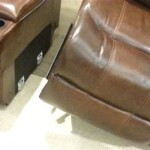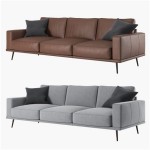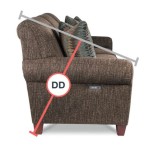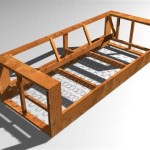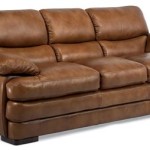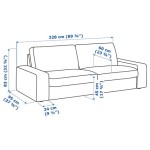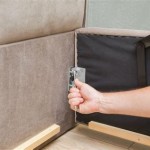What Is Sofa In Spanish? A Comprehensive Guide
The English word "sofa" translates directly into several Spanish words depending on the region, context, and specific type of seating being described. While “sofá” is the most common and universally understood translation, other terms like “sillón,” “diván,” and “canapé” are also used, each carrying slightly different connotations and usage patterns. Understanding these nuances is crucial for effective communication and comprehension when discussing furniture in Spanish-speaking environments.
The term used for "sofa" can also be influenced by historical factors and regional variations in language development. Different regions of Spain and Latin America have adopted and adapted words from other languages, including French and Arabic, which have shaped their respective vocabularies related to furniture and interior design. Therefore, familiarizing oneself with these variations provides a more complete understanding of the subtle distinctions that exist in the Spanish language.
This article will delve into the primary Spanish translations for "sofa," exploring their meanings, variations in usage, and providing examples to illustrate their application in different contexts. It is designed to offer a comprehensive overview of the topic, enabling the reader to effectively navigate conversations about sofas and related furniture in various Spanish-speaking regions.
The Core Translation: Sofá
The most direct and widely recognized translation of "sofa" in Spanish is "sofá." This term is universally understood across Spain and Latin America and is generally the safest and most common choice when referring to a sofa. "Sofá" typically describes a long, upholstered seat with a back and arms, designed for multiple people to sit on. It is suitable for formal and informal settings, and its meaning is relatively consistent across different dialects of Spanish.
The word "sofá" is derived from the Arabic word "suffa," which originally referred to a raised platform or bench covered with cushions. This etymological connection highlights the historical influence of Arabic culture on the Spanish language, particularly in areas related to domestic life and furnishings. The word traveled through various European languages before becoming the commonly used term in Spanish.
Grammatically, "sofá" is a masculine noun, and its plural form is "sofás." It is frequently used in conjunction with adjectives to describe its characteristics, such as "sofá cómodo" (comfortable sofa), "sofá grande" (large sofa), or "sofá de cuero" (leather sofa). The article used before the word is "el" for singular and "los" for plural, e.g., "el sofá" (the sofa), "los sofás" (the sofas).
Here are some example sentences demonstrating the usage of "sofá":
- "Me gusta relajarme en el sofá después del trabajo." (I like to relax on the sofa after work.)
- "Compramos un sofá nuevo para la sala de estar." (We bought a new sofa for the living room.)
- "El sofá es demasiado grande para este espacio." (The sofa is too big for this space.)
The term "sofá" is generally considered neutral in terms of formality. It can be used in casual conversations as well as in more formal settings, making it a versatile and reliable choice for most situations. Its universal recognition across Spanish-speaking regions further solidifies its position as the primary translation for "sofa."
Alternative Terms: Sillón, Diván, and Canapé
While "sofá" is the most common term, other words can also be used to refer to similar types of seating, each with its own specific connotations and usage patterns. These include "sillón," "diván," and "canapé." Understanding the differences between these terms is essential for a more nuanced understanding of furniture vocabulary in Spanish.
"Sillón" generally refers to an armchair or a single-seat upholstered chair with arms. While it can sometimes be used loosely to refer to a small sofa, it is more accurately understood as a chair designed for one person. The term implies comfort and is often used to describe a place to relax, read, or watch television. The plural of "sillón" is "sillones," and it is also a masculine noun.
Here are some example sentences using "sillón":
- "Me senté en el sillón junto a la chimenea." (I sat in the armchair next to the fireplace.)
- "Este sillón es muy cómodo para leer." (This armchair is very comfortable for reading.)
- "Necesito comprar dos sillones nuevos para la sala." (I need to buy two new armchairs for the living room.)
"Diván" is a term that refers to a long, upholstered seat without a back or arms, or with only partial arms and a back. It is often associated with a more luxurious or exotic style of furniture, reminiscent of Middle Eastern design. The word "diván" is also of Arabic origin, reflecting its historical connection to that region. In contemporary usage, "diván" often refers to a chaise lounge or a similar type of reclining seat. Like "sofá" and "sillón," "diván" is a masculine noun, with the plural form being "divanes."
Example sentences using "diván":
- "Ella se recostó en el diván para leer un libro." (She reclined on the divan to read a book.)
- "El diván en su estudio es de un estilo antiguo." (The divan in his study is of an antique style.)
- "Un diván puede ser un mueble muy elegante en una sala de estar." (A divan can be a very elegant piece of furniture in a living room.)
"Canapé" is a term that is primarily used in Spain and refers to a small sofa or settee, typically with a more decorative or ornate design. It often implies a piece of furniture that is more formal or traditional in style. The word "canapé" is of French origin and reflects the historical influence of French culture on Spanish furniture design. The plural form is "canapés," and it is a masculine noun.
Example sentences with "canapé":
- "El canapé antiguo era el centro de atención en el salón." (The antique settee was the center of attention in the living room.)
- "Prefiero un canapé pequeño a un sofá grande en mi apartamento." (I prefer a small settee to a large sofa in my apartment.)
- "Los canapés antiguos suelen tener tapicerías elaboradas." (Antique settees often have elaborate upholstery.)
In summary, while "sofá" is the most common and general term for a sofa, "sillón," "diván," and "canapé" offer alternative ways to describe different types of seating with varying connotations of size, style, and regional usage. Choosing the appropriate term depends on the specific context and the desired level of precision.
Regional Variations and Specific Usages
The usage of different Spanish terms for "sofa" can vary significantly depending on the region. While "sofá" remains the most universally understood term, certain regions may prefer or use other words more frequently. Understanding these regional variations can help avoid confusion and ensure effective communication.
In Spain, all three terms, "sofá," "sillón," and "canapé" are used. "Sofá" is the most common and versatile, used for general sofas. "Canapé," as mentioned earlier, specifically refers to a small, often ornate settee. "Sillón" is used almost exclusively for armchairs. These distinctions are generally well-understood throughout the country.
In Latin America, "sofá" is also widely used and understood. However, in some countries like Argentina and Uruguay, the term "sillón" might sometimes be used more broadly to refer to both armchairs and smaller sofas, especially in informal contexts. This can lead to some ambiguity, so it is always helpful to clarify the specific type of seating being discussed if there is any doubt.
Additionally, the influence of English is increasingly felt in some Latin American countries, particularly in urban areas. As a result, the English word "couch" is sometimes used, especially among younger generations. While not strictly correct Spanish, its usage is growing and is generally understood. However, it is best to stick to the established Spanish terms for formal communication.
The term "diván" is less commonly used in everyday conversations in Latin America compared to Spain. It is generally reserved for more formal or specialized contexts, such as interior design or historical discussions. The specific design of seating intended could instead be described with more descriptive phrases rather than the direct word 'diván'.
Furthermore, different Spanish-speaking countries might have their own regionalisms or colloquial terms for specific types of seating. These terms are often specific to a particular region or community and may not be widely understood elsewhere. Learning these terms requires immersion in the local language and culture.
For example, in some regions, a specific type of rocking chair might have a unique local name. Similarly, outdoor seating might be referred to using terms that are not typically used for indoor sofas. Therefore, context is crucial for understanding the intended meaning of these regional variations.
In conclusion, while "sofá" serves as a reliable and universally understood translation of "sofa," the other terms – "sillón," "diván," and "canapé" – each have their specific nuances and regional usage patterns. Being aware of these variations and considering the context of the conversation will greatly enhance your ability to communicate effectively about furniture in Spanish.

How To Say Couch In Spanish What Is The Meaning Of Diván Ouino

How To Say Sofa In Italian What Is The Meaning Of Sofà Ouino

Sofa Elegante Spanish Style Blue Leather Demejico

Tabacon Loveseat Spanish Style Sofa Demejico

Spanish Sofa 2 Seaters Bespoke Furniture

Sofa Tabacon Spanish Style Demejico

Don T Fret Mid Century Spanish Moroccan Style Sofa By Romweber Casa Victoria Vintage Furniture On Los Angeles Sunset Boulevard

Sofa Elegante Cafe Spanish Style Brown Leather Demejico

1920 S Spanish Revival Sofa Furniture Wooden Designs Decor

Spanish Revival Sofa Chestnut R Furniture By Olinda Romani Lance Reynolds

